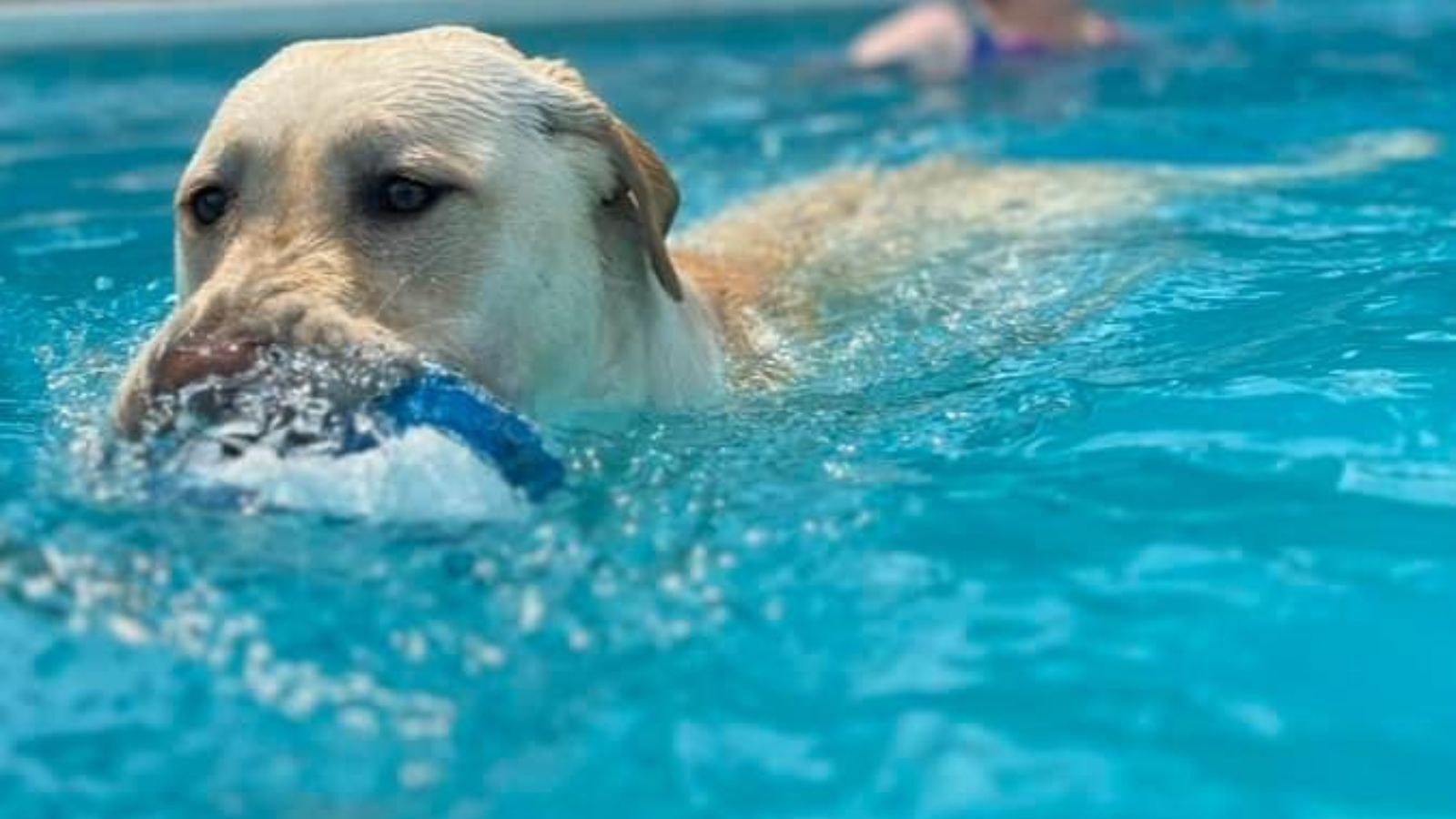Swimming Pools and Dogs: Best Practices for Safety, Design, and Cleanliness
Making Your Pool Pet-Friendly from the Start
2 min read
Liliana Escudero : Aug 26, 2025

Are you a pool owner or planning to become one and wondering how your dog's swimming habits might impact your pool? Have you thought about making your pool safe and accessible for your furry friend?
This guide will provide insights into designing or renovating your pool to accommodate your dog's needs, ensuring safety, durability, and fun for all. Let's face it: not all dogs are natural swimmers, but pet owners should know everything about their swim habits.
We'll explore the best materials, safety measures, and maintenance tips to create a dog-friendly pool environment.
Choose materials that can withstand the wear and tear from your dog's nails and activity. Paw-friendly surfaces, such as textured concrete or natural stone, are ideal. Avoid materials that can become slippery or are prone to damage.

Breeds with short legs, dense bodies, or flat faces—like Bulldogs, Pugs, and Dachshunds—often struggle to stay afloat. If your dog isn't a confident swimmer, pool access should always be supervised and restricted when unattended. Install ramps or wide steps to allow easy access for dogs of all sizes. Training your dog to use these entry and exit points can prevent accidents and reduce stress.
Dogs introduce additional contaminants like hair, dirt, and oils into the pool. Regularly check and adjust chlorine levels to maintain water quality. Consider using a pool filter designed to handle increased debris.
Rinsing your dog before swimming can help reduce the amount of dirt and hair that enters the pool. After swimming, rinse off chlorine to prevent skin irritation.
.jpg?width=181&height=242&name=Filter%20Vertical%20Blog%20Visual%20(3).jpg)
Additional filter cleaning cycles should be performed more frequently to prevent dog fur from clogging the filter or circulating back into the pool, which can create additional sanitation issues. The type of pool filter should also be considered, and pre-filter systems are advantageous when large amounts of hair enter the pool's water.
Always watch your dog while they're in or around the pool. Even strong swimmers can get tired or encounter difficulties.

A well-fitted life jacket can provide extra safety for dogs new to swimming or breeds that aren't natural swimmers. Look for jackets with handles for easy assistance.
Ensure your dog has access to fresh drinking water to prevent them from drinking pool water, which can cause stomach upset or serious health issues.

A fence can prevent unsupervised access to the pool, reducing the risk of accidents. Ensure the fence is tall enough and has a secure gate.
If space allows, create a separate shallow area for your dog to play safely. This can be especially beneficial for small breeds or older dogs.
Start in shallow water and use positive reinforcement to build your dog's confidence. Never force your dog into the pool.
Consistently guide your dog to the designated exit points during training sessions. This ensures they know how to get out safely if they become tired.
![Copy of Copy of [TEMPLATE] Horizontal Blog Visual (1)](https://www.jdesigns.com/hs-fs/hubfs/Dogs%20Blog/Copy%20of%20Copy%20of%20%5BTEMPLATE%5D%20Horizontal%20Blog%20Visual%20(1).jpg?width=507&height=380&name=Copy%20of%20Copy%20of%20%5BTEMPLATE%5D%20Horizontal%20Blog%20Visual%20(1).jpg)
Designing or renovating a pool with your dog in mind enhances safety and enjoyment for everyone. By selecting suitable materials, implementing safety measures, and maintaining proper pool hygiene, you can create a fun and secure environment for your canine companion.
Ready to make your pool dog-friendly? Contact our team for expert advice on materials, safety features, and maintenance tips tailored to your needs.
Sources:

Making Your Pool Pet-Friendly from the Start

Have you ever wondered if your gas pool heater could be putting your family at risk? While these heaters are fantastic for extending swim seasons and...

Why is your pool water level always low, even though you keep refilling it?Could an outdated autofill system be silently wasting water — and money?